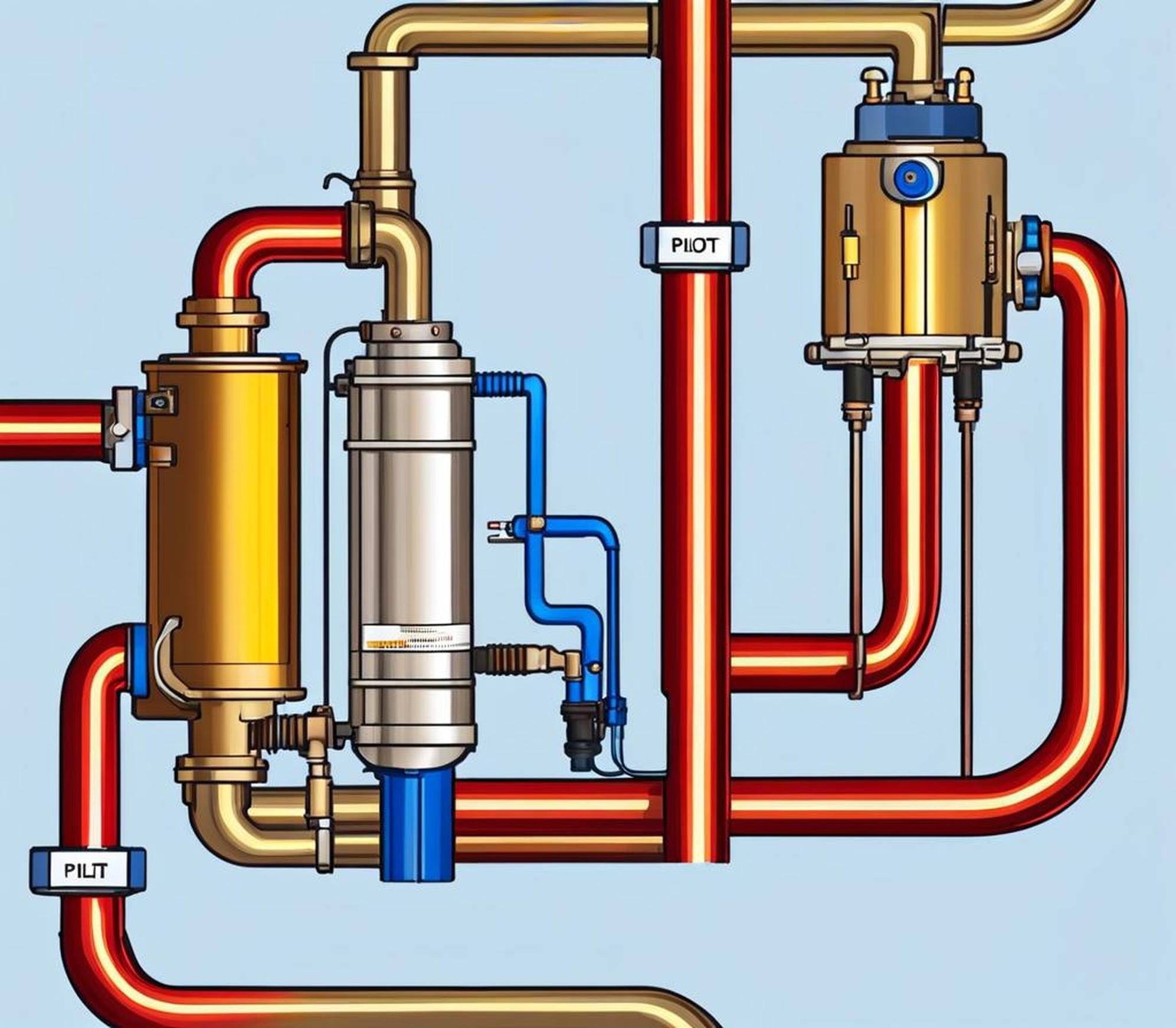Having a properly functioning pilot light is essential for a gas water heater to be able to provide hot water. But what do you do when the pilot light just won’t stay lit?
There are several potential causes behind a pilot light that won’t stay on. The good news is that many pilot light issues can be fixed with some simple troubleshooting and maintenance. Read on to learn why your water heater pilot light keeps going out, and how to get it working again.
What Are the Symptoms of a Faulty Pilot Light?
There are a few key signs that indicate your water heater’s pilot light is malfunctioning:
- The pilot light goes out soon after you light it
- The pilot light repeatedly shuts off after initially lighting
- The pilot flame is weak, small, or flickering
- The pilot light burns a color other than blue
Any of these symptoms likely point to an underlying issue causing the pilot light to go out. Identifying the specific problem is the first step toward fixing it.
Main Causes of a Pilot That Won’t Stay Lit
Thermocouple Issues
The thermocouple is a heat-sensing device that signals the gas valve to remain open after the pilot is lit. Problems with the thermocouple are one of the most common reasons a pilot light keeps going out.

A faulty thermocouple may fail to generate enough electrical current to hold the gas valve open. You can test the thermocouple using a multimeter. If it’s defective, replacing it should resolve the issue.
Inadequate Gas Flow or Pressure
In order for the pilot flame to burn steadily, it needs adequate gas flow and pressure. Low gas pressure can cause the pilot flame to be too small or weak, resulting in it being extinguished.
Using a manometer, check the gas pressure to your water heater. If it’s lower than recommended, there may be a partial blockage or leak in the gas line. Increasing the gas pressure may help the pilot stay lit.
Dirty or Clogged Pilot Assembly
Dirt, dust, spider webs, and other debris can build up in or around the pilot light tube. This restricts airflow and can prevent the pilot from getting enough oxygen to burn properly.
Carefully clean around the pilot light opening using compressed air or a vacuum cleaner. Use a pipe cleaner to clear any dirt from inside the pilot tube.
Problems with the Gas Valve
Issues with the gas control valve can also cause the pilot light to go out. The valve may not be opening fully or might close prematurely before the thermocouple can take over.
Examine the gas valve for any visible damage. Use a multimeter to test for electrical issues. If faulty, replacing the gas valve should resolve any problems.
Ignition System Failure
The pilot is initially lit by the ignition system sparking. If this spark is weak, intermittent, or stops producing altogether, it can fail to properly light the pilot.
Check the spark electrode for corrosion, damaged insulation, or improper spacing. Repair or replace faulty ignition components so they can reliably light the pilot flame.
How to Relight a Stubborn Pilot
If you’re having trouble keeping the pilot lit, here are some tips for manually relighting it:
- Make sure all gas valves are turned off before relighting. This allows gas to dissipate.
- Slowly turn the gas control knob to the pilot position.
- Press and hold the ignition button while viewing the pilot. Click until lit.
- Continue holding the gas control knob down for 30 seconds once lit.
- Release the knob and check that pilot stays on. If not, repeat process.
Allow 2-3 minutes between relight attempts for any gas buildup to dissipate. If it just won’t stay on, have a professional inspect it.
Preventing Pilot Light Problems
While pilot lights can certainly be temperamental at times, there are things you can do to help keep problems at bay:
- Inspect the pilot assembly periodically and clean if needed.
- Ensure proper ventilation around the water heater.
- Check for gas leaks which could contribute to shutdowns.
- Keep the area around the pilot free of dust, lint, and debris.
Performing occasional maintenance helps support proper pilot operation.
When to Call a Professional
If you’ve tried the troubleshooting steps but the pilot light still won’t stay lit, it’s best to call for professional assistance. A technician can fully evaluate the ignition system and gas connections. They can detect issues that may be trickier to identify yourself.
Never hesitate to call a professional if you have any concerns about gas leaks, carbon monoxide risks, or your safety when dealing with gas appliances. It’s better to be safe and have an expert handle any necessary repairs.
A water heater’s pilot light going out can certainly be frustrating. But in many cases, there are a handful of common issues causing the problem that you can troubleshoot yourself.
Checking for thermocouple failure, gas pressure concerns, debris buildup, and ignition system faults will help you determine why the pilot light won’t stay lit. With some maintenance and component replacements, you can often get a balky pilot working reliably again.
Just remember to exercise caution and seek professional assistance if needed. With the right knowledge and a methodical approach, a bothersome pilot light can be fixed – restoring hot water and sanity once again!
